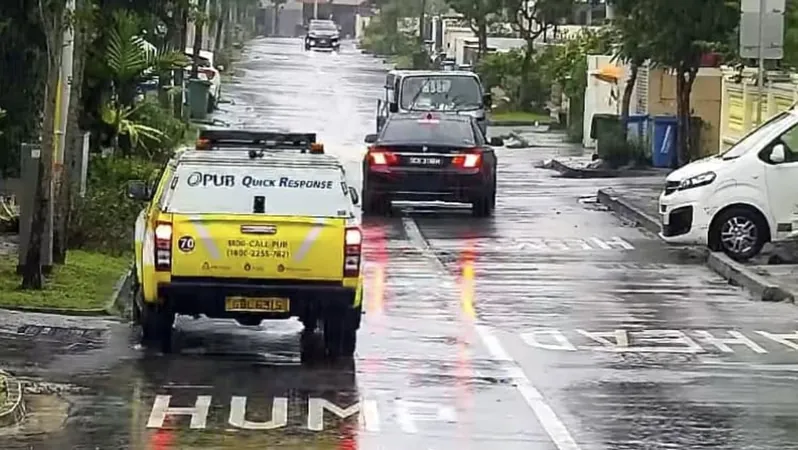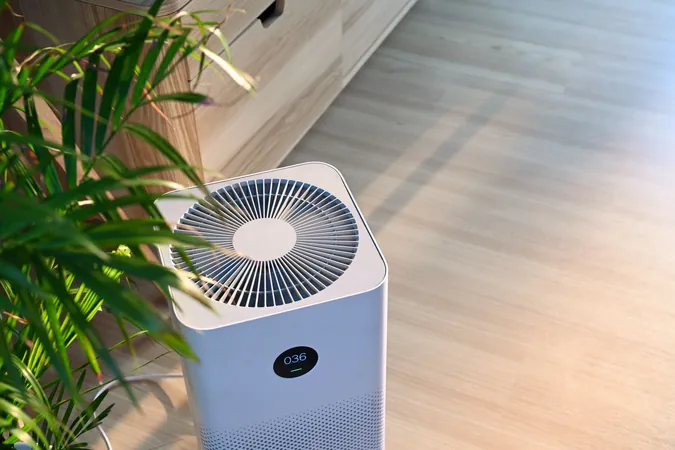
Revolutionary AI Tool Could Redefine How We Screen for High Blood Pressure and Diabetes—No Cuffs or Needles Required!
2024-11-11
Author: Jia
Introduction
An innovative tool harnessing the power of artificial intelligence is paving the way for a groundbreaking approach to detect high blood pressure and diabetes without traditional methods like blood pressure cuffs, invasive blood tests, or wearable devices, according to new research emerging from Japan.
Study Presentation
The study, presented at the American Heart Association’s Scientific Sessions in Chicago, showcases a contactless system that has successfully identified a significant percentage of hypertension and diabetes cases among patients. While the findings are preliminary, they promise a future where health monitoring could occur in the comfort of one’s home—without the anxiety of medical visits.
Research Details
Dr. Ryoko Uchida, the lead researcher from the University of Tokyo’s advanced cardiology department, emphasized that this high-speed video monitoring technique offers a non-invasive, non-active form of health screening. By merely sitting still while the system captures images of blood flow in the face and hands at 150 frames per second, individuals can be screened efficiently and comfortably.
Participant Analysis
The researchers analyzed data from 215 participants, including individuals with diagnosed hypertension and Type 1 or Type 2 diabetes, alongside healthy control subjects. The study revealed that the AI-driven algorithm could measure pulse wave arrival times in 30 specific areas—22 on the face and 8 on the hands—to detect abnormalities associated with these conditions.
Accuracy of the AI System
When the results were compared to conventional blood pressure measurements, the AI system demonstrated an impressive 94% accuracy in identifying stage 1 hypertension, defined as a systolic reading of 130-139 mmHg or a diastolic reading of 80-89 mmHg. Additionally, the system achieved a 75% accuracy for diagnosing diabetes based on hemoglobin A1C scores, specifically in people with readings of 6.5 or higher, the diagnostic threshold for diabetes.
Future Research Needs
However, it’s important to note that this innovative method is still in its developmental stages and requires further validation. It has yet to be tested on a diverse population outside Japan, and questions remain regarding its efficacy in various lighting conditions and environments, as noted by Dr. Uchida.
Expert Opinions
While the potential for a contactless screening tool is exciting, experts like Dr. Geoff Rubin from the University of Arizona caution against overhyping the technology. He argues that while this method eliminates the discomfort of needles and cuffs, patients would still need to sit still in a controlled environment—a process he suggests might take just as long as traditional testing.
Conclusion
Rubin remarked, “The promise of wearables and remote health monitoring is indeed transformative, but widespread engagement and acceptance remain significant hurdles. This system offers intriguing possibilities, but many practical challenges must be addressed before it can become a mainstream solution.” As innovators continue to explore the potential of AI in health care, this contactless system could revolutionize how we approach chronic disease detection and management. The future of medical technology may ultimately hinge on how best to integrate such tools into everyday health practices, ensuring accuracy and accessibility for all.




 Brasil (PT)
Brasil (PT)
 Canada (EN)
Canada (EN)
 Chile (ES)
Chile (ES)
 España (ES)
España (ES)
 France (FR)
France (FR)
 Hong Kong (EN)
Hong Kong (EN)
 Italia (IT)
Italia (IT)
 日本 (JA)
日本 (JA)
 Magyarország (HU)
Magyarország (HU)
 Norge (NO)
Norge (NO)
 Polska (PL)
Polska (PL)
 Schweiz (DE)
Schweiz (DE)
 Singapore (EN)
Singapore (EN)
 Sverige (SV)
Sverige (SV)
 Suomi (FI)
Suomi (FI)
 Türkiye (TR)
Türkiye (TR)